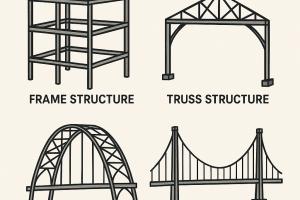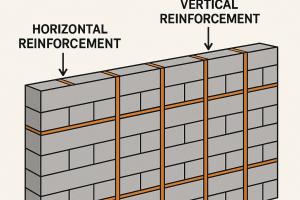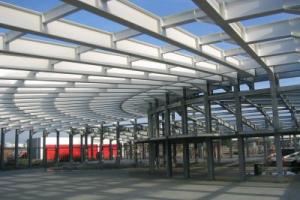Lateral Torsional Buckling and Local Buckling | Understanding Steel Structural Behavior
Lateral torsional buckling and local buckling are two critical phenomena that engineers must consider when designing steel structures. Understanding these behaviors is essential for ensuring the structural integrity and safety of steel beams and columns. This article provides an overview of lateral torsional buckling and local buckling, their causes, and design considerations to mitigate their effects.
1. Lateral Torsional Buckling:
Lateral torsional buckling occurs in beams subjected to combined bending and torsion. It is characterized by the lateral deflection and twisting of the beam about its longitudinal axis. This phenomenon is primarily influenced by the beam's flexural rigidity, torsional stiffness, and the applied loads.
Causes:
Lateral torsional buckling can arise due to asymmetric loading, such as an eccentrically applied load or an uneven distribution of loads along the beam's length. It can also occur when the beam's torsional rigidity is insufficient to resist the torsional moments generated by applied loads.
Design Considerations:
To prevent lateral torsional buckling, engineers consider various design aspects. They calculate the beam's critical moment, which is the point at which lateral torsional buckling occurs. Design provisions, such as moment redistribution and bracing, are employed to increase the beam's resistance to lateral torsional buckling. Additionally, the selection of appropriate beam sections with adequate torsional stiffness is crucial in mitigating this behavior.
2. Local Buckling:
Local buckling refers to the instability and deformation of a steel element in a localized region due to compressive stresses exceeding the material's capacity. It occurs when the element's slenderness ratio exceeds certain limits. Local buckling is most commonly observed in steel columns, but it can also affect beams and beam components.
Causes:
Local buckling is primarily influenced by the compressive forces acting on the steel element. When the compressive forces exceed the critical buckling load, the element experiences local deformations, such as wrinkling or bulging, leading to reduced load-carrying capacity. Factors that contribute to local buckling include slender sections, high-strength steels, and imperfections in the steel member.
Design Considerations:
Designers must ensure that the steel elements are adequately sized and proportioned to resist local buckling. The selection of appropriate sections, such as compact or non-compact sections, depends on the slenderness ratio and the steel material's properties. Design codes provide guidelines for determining the critical buckling load and establishing design parameters to prevent local buckling, such as limiting the unsupported length of columns.
3. Interaction Between Lateral Torsional Buckling and Local Buckling:
In some cases, the occurrence of lateral torsional buckling and local buckling may be interrelated. For example, the presence of local buckling in a beam's compression flange can reduce its effective flexural rigidity, thereby increasing the susceptibility to lateral torsional buckling. Design considerations should account for this interaction, ensuring that both phenomena are adequately addressed.
Lateral torsional buckling and local buckling are significant considerations in the design of steel structures. Engineers must understand the causes and effects of these behaviors to ensure the safe and efficient performance of steel beams and columns. By employing appropriate design provisions, such as moment redistribution, bracing, and section selection, engineers can mitigate the risks associated with lateral torsional buckling and local buckling, ensuring the structural integrity of steel components.





